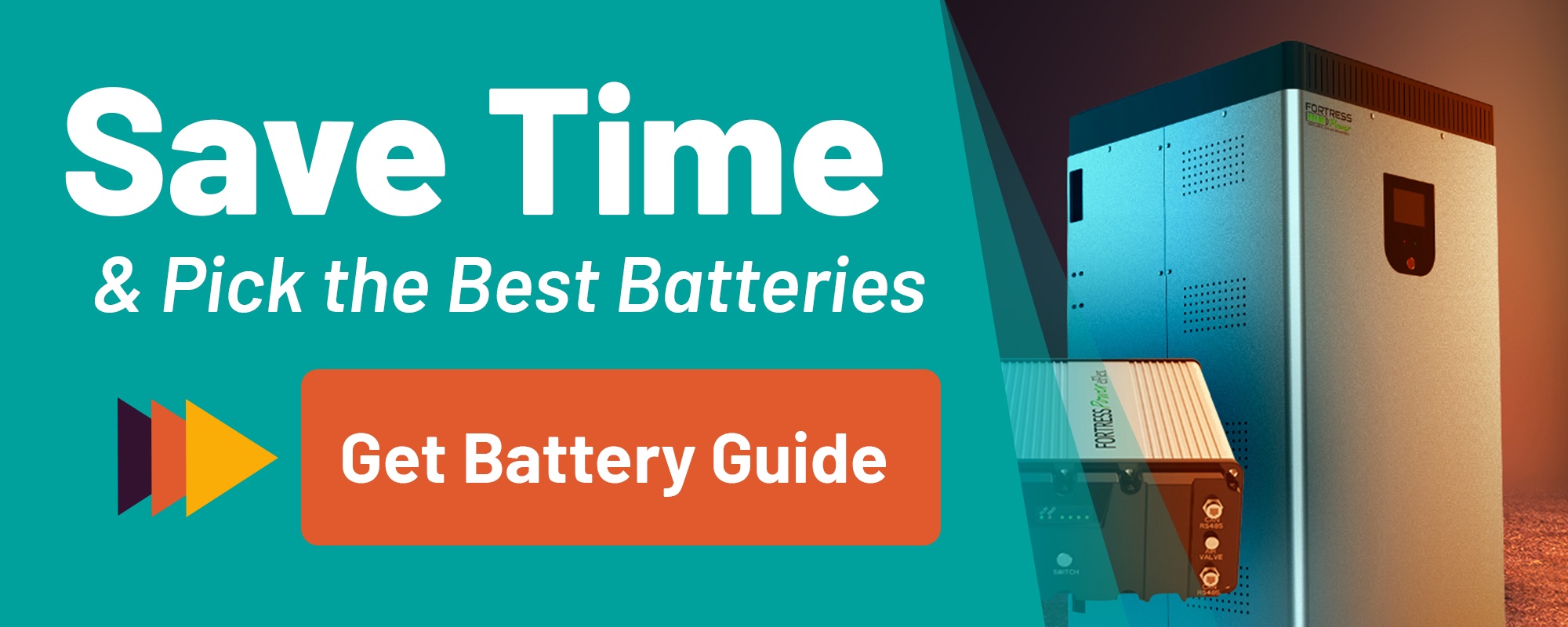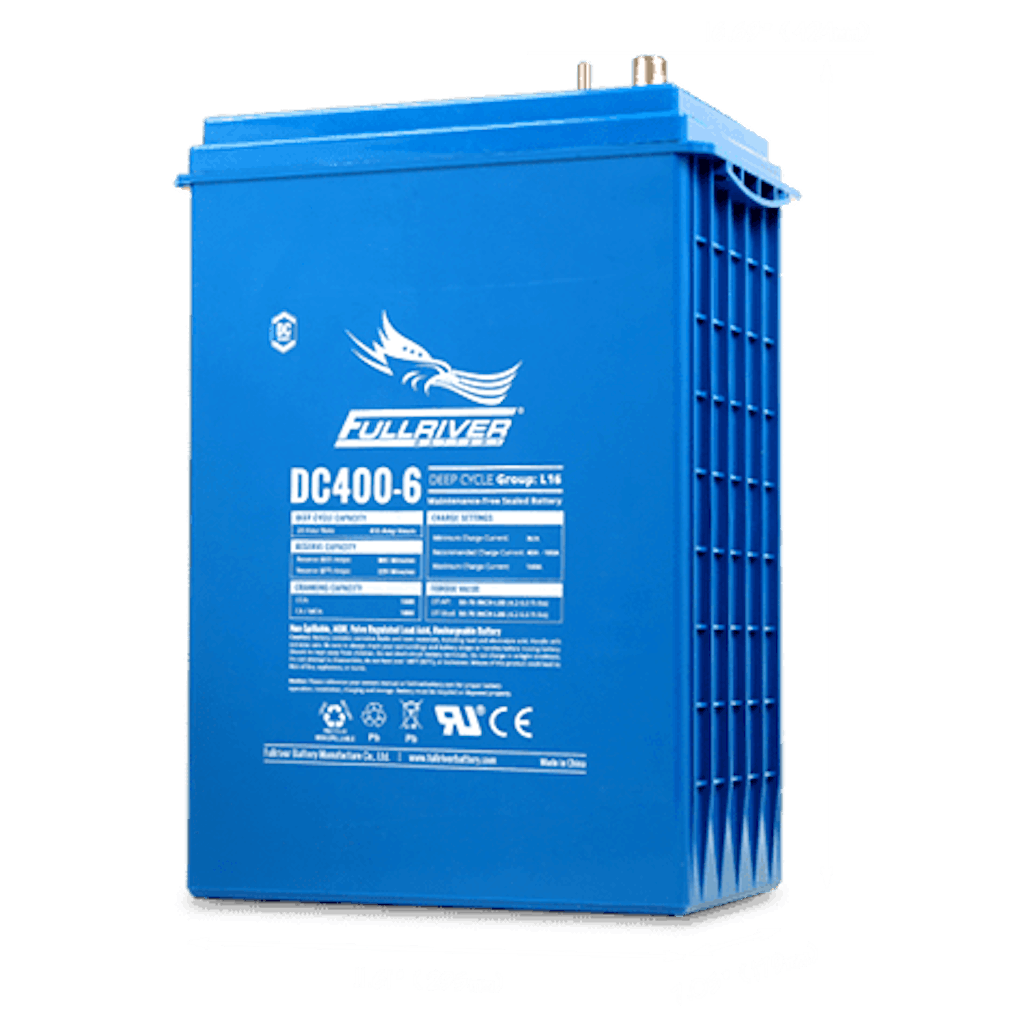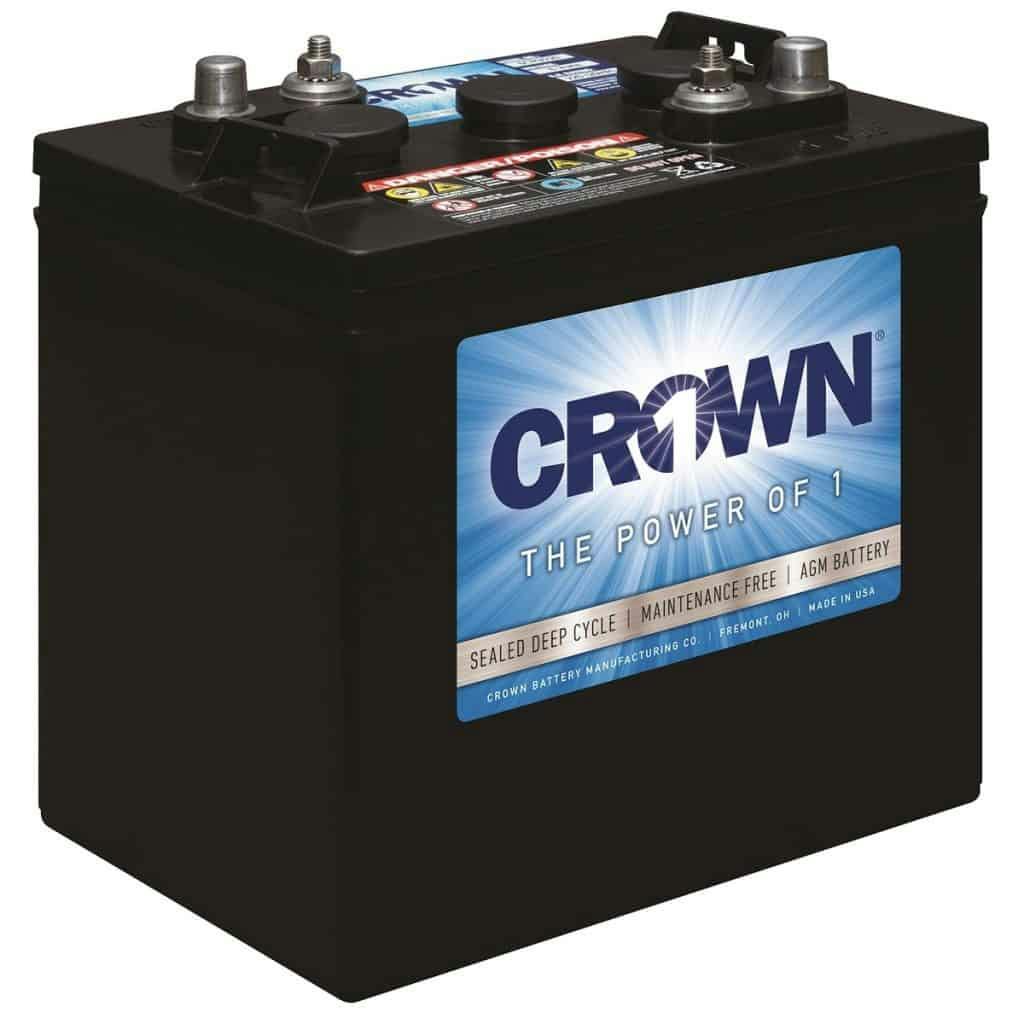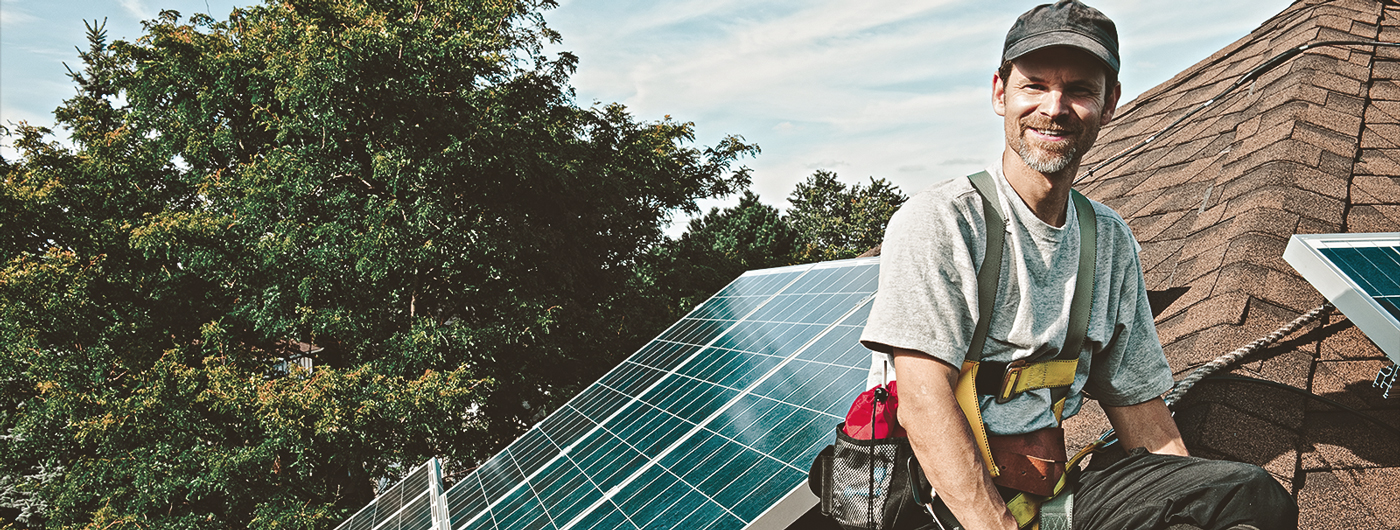Solar batteries are a smart investment for energy storage. Without a battery bank, you won’t be able to store energy generated by your system for later use. If you’re tied to the grid, no battery means no backup power when the utility grid suffers an outage. If you live off-grid, your system simply won’t work at all.
Batteries are crucial to keeping your system running.
Choosing the best battery for your solar panels involves many factors in your decision, including the battery’s capacity, power, efficiency, and costs depending on your needs. To help you make the right choice, let’s review how solar batteries work, the different types of batteries available, and our recommendations for the best batteries for solar in 2020.
How Do Solar Batteries Work?
When installing a solar battery as part of your solar panel system, you can store excess solar energy instead of sending it back to the power grid. If your panels are producing more electricity than you need, this energy can go back into charging your battery.
When your solar panels aren’t producing electricity, you can draw from the stored energy when you need it. The electricity is sent back to the grid only when your battery is full or draws from the grid only when the battery is low.
What Are the Different Types Of Batteries?
Batteries for energy storage are typically made of lead-acid or lithium-ion. When selecting the best battery for your solar system, it’s important to understand the difference between what is a deep cycle battery vs. flooded lead-acid, sealed lead-acid, and lithium batteries before making your selection. Here are some of the differences between lead-acid vs. lithium-ion batteries.
Flooded Lead-Acid Batteries
Flooded lead-acid (FLA) batteries have been used for the last 150 years and are among the most common batteries used for off-grid solar setups. These batteries are inexpensive, 99% recyclable, and easy to get rid of at the end of their lifespan.
These are the best batteries for solar if you’re looking for an affordable option but with the following hands-on monitoring:
- Flooded lead-acid batteries are designed to handle daily charge cycling. They do emit gas as a byproduct, so they must be ventilated correctly.
- FLA batteries are ideal for people who prefer to be hands-on with their system. They’re the most affordable option but require occasional upkeep to work properly.
- These batteries need regular maintenance. The plates of every cell in the battery must be submerged in water to function properly (which is why they are called “flooded” batteries). You’ll need to add water every 1 to 3 months to keep the plates submerged. It’s smart to check on them once a month.
Sealed Lead-Acid Batteries
If you are unable to perform regular check-ups, the best battery for your solar panels is the sealed lead-acid battery with these advantages:
- These batteries are spill-proof and non-hazardous. There are two types of sealed lead-acid batteries with fairly similar characteristics: AGM (absorbent glass mat) and gel.
- Sealed batteries are a self-contained system. They don’t need to be refilled with water, like flooded batteries. For that reason, they work well at properties that aren’t occupied full-time, like an off-grid vacation cabin you visit once or twice a year.
- Sealed batteries are better at handling temperatures. They won’t self-discharge as fast if they sit idle for extended periods while you’re away.
Lithium Batteries
Lithium batteries are a newer technology that hit the market in the 1970s. They are common in laptops and cellphones, but lately they have become more popular in the renewable energy space. Lithium batteries are more expensive, but there are several benefits to justify the higher price tag:
- Longer lifespan
- No maintenance
- More efficient power usage
- More usable storage capacity (deeper discharges)
- No off-gassing/ventilation
How Do I Compare Solar Batteries
As you consider your solar battery options, you’ll want to compare each type of battery based on the capacity, depth of discharge (DoD), round trip efficiency, and battery life to find the best batteries for solar depending on your system’s requirements. Make sure to check the following:
- Capacity: Capacity is the total amount of electricity that a solar battery can store. This power is measured in kilowatt-hours (kWh).
- Depth of discharge (DoD): The depth of discharge (DoD) indicates the amount of battery capacity that’s used. The higher the DoD, the more usage you’ll get from the battery’s capacity. Your depth of discharge should generally be at least 40% or higher.
- Round-trip efficiency: Round-trip efficiency is the difference between the amount of energy used to charge it and the available amount of energy. A higher round-trip efficiency is generally more economical. You should look for a round-trip efficiency around 80%.
- Battery life & warranty: Since battery performance declines over time, a warranty guarantees good performance for years or cycles as well as ensuring the battery maintains a certain capacity.
What Are the Best Batteries For Solar Systems in 2020
So what are the best batteries for a solar system on the market? Here’s a list of our recommendations for the best batteries for solar in 2020:
- Best overall off-grid battery for homes: Discover 48V lithium
- Best value off-grid battery for homes: Crown CR430 FLA
- Best off-grid battery for vacation homes: Fullriver DC400-6 AGM
- Best battery backup for grid-tie systems: Fullriver DC400-6 AGM
- Best battery for energy resale: Discover 48V lithium
- Best battery for RV/mobile systems: Crown 6CRV220 SLA
How Do I Choose the Best Batteries For Solar?
How do you decide what batteries are right for you? Picking the right battery depends on many factors like application, budget, and expectations for upkeep (like regular maintenance and replacement interval). Your living situation will determine the smartest battery choice for your project. Here’s our breakdown of the best batteries to meet your solar needs:
Best Overall Off-Grid Battery
If you live in an off-grid home full time, you need a battery that can keep up with your power demands on a daily basis.
Our recommendation for the best overall off-grid battery for homes is the Discover 48V Lithium battery. This is the best battery if you’re looking for a long lifespan and affordable flexibility to expand your system down the road. Reasons to choose this battery include:
- Lithium batteries are a premium storage option. They have a longer lifespan and charge faster than other battery types. And because they can handle deeper discharges, you need less overall capacity than you would with a comparable lead-acid battery bank.
- They also make it easier to expand your system over time. Let’s say you add a new well pump to your property down the line. With lead-acid batteries, it can be difficult, or even impossible, to expand your battery bank, depending on the age and how they are wired. That’s not the case with lithium batteries. More batteries can be added over time because each battery operates independently with its own internal Battery Management System (BMS).
- Lithium batteries can handle extended periods of time without being recharged. This situation would actually damage lead-acid batteries because they need to be recharged every day and will be damaged after several days without a full charge.
Best Value Off-Grid Battery For Homes
Looking for a more cost-effective option? The best value battery for off-grid systems is the Crown CR430 flooded lead-acid battery. Choose this option if:
- You live the off-grid lifestyle. If you’re more comfortable with hands-on DIY projects and don’t mind doing the occasional tune-up on your battery bank, the CR430 is an excellent option.
- You want capacity and reliability at a great price. The 430 amp-hour capacity can’t be beaten for the value. The Crown is a reliable American manufacturer (they show up on this list four times for a reason). CR430s are built in Fremont, Ohio, at Crown’s advanced manufacturing plant.
Best Off-Grid Battery For Vacation Homes
What if you have an off-grid vacation home that you don’t visit regularly? You want a battery that doesn’t require regular maintenance since you’ll only be on-site a few times a year.
In these cases, a sealed AGM battery is the best option. Our recommendation is the 415Ah FullRiver DC400-6:
- The lower capacity is good because you don’t need year-round storage. We also skipped out on the premium lithium option, because it’s overkill for a system that will only be used a few times a year.
- These batteries are relatively inexpensive. You don’t have to make a huge investment into a property where you won’t be spending that much time.
The Best Battery for Grid-Tied Backup
If you have a grid-tied system with battery backup for emergencies, you won’t need a battery with tremendous storage power. For that reason, we recommend the same battery as above: the FullRiver DC400-6 with a sealed AGM:
- You use the battery only when you need it. This battery will only see use when your power goes out, and hopefully, that doesn’t happen more than once a year.
- The grid-tied battery requires low maintenance. You want a battery that doesn’t require maintenance—it should simply work in the rare cases you need it.
Best Battery For Storing & Selling Energy
In certain areas, the utility company charges more during peak use time (around 4 to 9 pm), when people get home from school and work.
You’ll want to be able to store energy generated during the day and sell it back in the evening, when rates hit their peak.
For this type of use, we recommend the Discover AES 7.4kWh or the SimpliPhi 3.5 kWh as best batteries for your solar needs:
- The energy storage allows you to store daytime energy. You can sell it back to the utility company for a profit.
- Both are 48V lithium batteries have a much longer lifespan. We recommend lithium here because the battery will be cycled more heavily than in a vacation home or battery backup application. The lithium option can be just as cost-effective as lead-acid batteries in terms of cost-per-cycle over the life of the battery.
These batteries protect you from future changes in your utility rates and is a must if you live in an area with time-of-use rates (TOU), high demand charges, or no net metering.
The Best Batteries For RV, Marine, Remote Industrial & Small Off-Grid Use
What if you need to power a smaller application, like an RV, boat, or small outbuilding on your property?
If you’re looking for a compact battery with modest capacity, choose from the following options:
- Crown 6CRV220: For light-use cases, the 6CRV220 sealed AGM battery is a good choice. Originally designed to power golf carts, this battery has a very low profile but can still withstand deep cycling over a long lifespan. We recommend this battery for tiny homes, boats, and RVs—any application where space is at a premium, and you just need to power the essentials.
- Crown 12CRV110: This is our pick for remote industrial applications. It can power small-scale industrial equipment in remote areas not accessible by power lines. Common applications include lighting, pumps, traffic signs, and monitoring equipment.
Solar Battery Solutions
No matter what kind of off-grid system you’re looking for, your battery bank is a key component. Visit our battery buying guide or battery maintenance tips to learn more, or check out our battery banks to find a pre-packaged solution.
Need help designing your solar system or choosing the best batteries for solar? Get in touch with us for a free consultation or give us a call at 1-800-472-1142.









